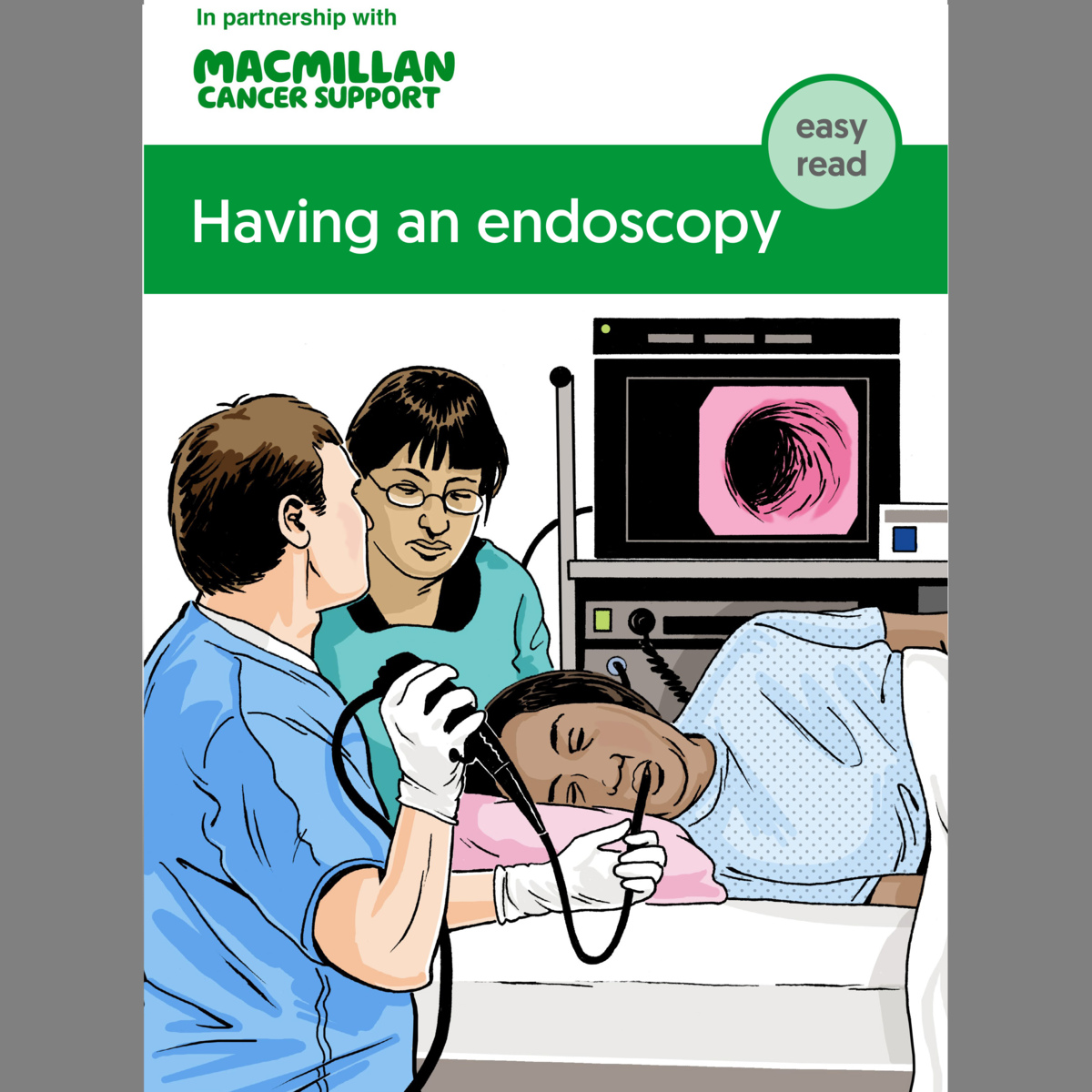Endoscopy
What is an endoscopy?
An endoscopy is a test that looks inside the body using an instrument called an endoscope.
An endoscope is a thin, flexible tube. The tube has a light and a camera at the end. It is passed into the body to help see inside. The person who does an endoscopy is called an endoscopist. They may be a doctor or a specially trained nurse.
Endoscopy tests can be used to help diagnose cancer. They can help doctors to find out more about your symptoms. They can also be used to give some types of treatment from inside the body.
An endoscopy may also be used to remove small samples of tissue from inside the body. This is called a biopsy. It is common for the endoscopist to take more than 1 sample.
Related pages
Booklets and resources
Upper endoscopy
When the endoscope is used to look at the upper end of the digestive system it is called an upper endoscopy. During this test the endoscope is passed through the mouth and throat. This test may have other names depending on the area examined:
- A gastroscopy or gastrointestinal endoscopy looks inside the oesophagus (gullet), stomach and duodenum (the first part of the small bowel). This is also called an oesophagogastroduodenoscopy or OGD.
- An enteroscopy looks further into the small bowel to the jejunum and ileum.
Colonoscopy
When the endoscope is used to look at the large bowel it is called a colonoscopy. During this test the endoscope is passed into the back passage.
Other types of endoscopy
Other endoscopy tests include:
-
bronchoscopy, to look inside the airways and lungs
-
cystoscopy, to look inside the bladder
-
laparoscopy, to look inside the tummy (abdomen) or pelvis through small cuts in the tummy
-
laryngoscopy, to look inside the part of the throat called the larynx
-
nasendoscopy, to look at the back of the mouth, nose and throat
-
hysteroscopy, to look at the lining of the womb (uterus).
We have more information about different tests in our A-Z list.
If you need information about a type of endoscopy and cannot find it, please call our Support Line for free on 0808 808 0000 (7 days a week, 8am to 8pm).
About our information
This information has been written, revised and edited by Macmillan Cancer Support’s Cancer Information Development team. It has been reviewed by expert medical and health professionals and people living with cancer.
-
References
Below is a sample of the sources used in our endoscopy information. If you would like more information about the sources we use, please contact us at informationproductionteam@macmillan.org.uk
Oesophago-gastric cancer: assessment and management in adults. NICE guideline [NG83] Published 24 January 2018 (last updated 04/07/2023). National Institute for Health and Care Excellence. Available from www.nice.org.uk/guidance/ng83 [accessed July 2023].
Oesophageal Cancer: ESMO clinical practice guidelines for diagnosis, treatment and follow up. Published: 29 July 2022.
Dr Chris Jones
Reviewer
Speciality Registrar in Clinical Oncologist and Clinical Lecturer in Clinical Oncology
Date reviewed

Our cancer information meets the PIF TICK quality mark.
This means it is easy to use, up-to-date and based on the latest evidence. Learn more about how we produce our information.
The language we use
We want everyone affected by cancer to feel our information is written for them.
We want our information to be as clear as possible. To do this, we try to:
- use plain English
- explain medical words
- use short sentences
- use illustrations to explain text
- structure the information clearly
- make sure important points are clear.
We use gender-inclusive language and talk to our readers as ‘you’ so that everyone feels included. Where clinically necessary we use the terms ‘men’ and ‘women’ or ‘male’ and ‘female’. For example, we do so when talking about parts of the body or mentioning statistics or research about who is affected.
You can read more about how we produce our information here.





